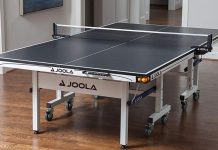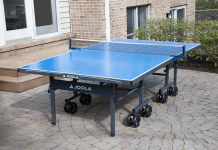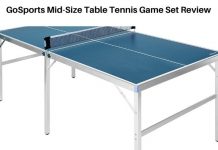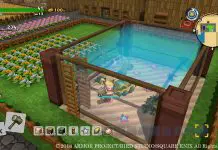Badminton lovers often ask how to hold a badminton racket.
The method of using your racquet can be the difference between winning and losing a badminton match. Badminton is a game that entails a great application of wrist work. While people play badminton, the foremost thing they need to be taught is how to apply their apparatus properly.
Therefore, how you hold a badminton racket while smashing will essentially determine the quality of your game.
This article teaches you the basic badminton gripping technique and rules. Before you enter the badminton court, are you holding your racket properly?
Table of Contents
How to Hold a Badminton Racket
Here are two keys to being able to hold a racket consistently and with good grip:
- Getting the right shape of the hand (should be like a handshake)
- Holding the racket comfortably
Read More:
Types of Grip
Forehand Badminton Grip
The majority of the shots you play make use of the badminton forehand grip through the aid of wrist movement, which allows you to move your waist freely. This is a basic condition that you will prepare with your racket before any service or during the match.
So mastering this grip is a must as it is your first base in this game. It is usually used to hit the shuttlecock in front of you and for overhead shots.
Your racket needs to point straight down, and your grip should be relaxed. Let’s now discuss the role of your fingers. Whenever you’re holding the racket, your thumb, your forefinger, should have a V shape, and the lowly part of the V should be aligned at the head of your racket.
The handle of your racket should touch only the side of the thumb. To do this, you can either wrap it or take it straight around the handle. You will also notice that the bottom of your thumb will not touch the racket. Choose your racquet and try it now.
Moreover, the remaining fingers should have gaps except for the index finger and the middle finger, where the distance will be greater; otherwise, the distances will be more or less the same. Make sure the index finger is curved around the handle and not straight under any circumstances. This is an ordinary fault that can become an injury.
Backhand Badminton Grip
Don’t jump straight to learn this technique. To learn backhand grip, you need to master forehand technique, as starting with a basic grip is the easiest way to learn a new extra grip. For the backhand grip, to give the handle a backhand grip, you need to position your racket for the forehand grip and rotate it around 45 degrees.
The thumb pad should be placed on the handle’s wide bevel, which will also provide a power boost to your shots. Remember that, like a forehand grip, your scalp has to rest on the fingers, not on your palm.
If you study it properly and accurately, you should master this step for a while in both skills.
Smash Grip in Badminton
Usually, most players do not understand that they must use a different grip to break. Instead, they will use a basic forehand grip to create badminton smashes that are strong if you try to break strong and effective.
This grip will enable you to transfer power from your shoulders to your wrists quickly and finally result in a powerful shot.
Net Shot Grip Technique
Forehand grip for net shots
The technique is almost the same as holding a racquet in your fingers like a normal forehand grip, but you only need to hold the finger’s racquet and rotate the racket by moving the fingers and wrists. The amount of pressure you apply when making a shot is very important, and that is why it is advisable to keep the handle in your fingers so that the net shot becomes more accurate and precise.
Backhand grip for net shots
The backhand grip’s major goal is that you have to hold the racket in the fingers, which will let you make the necessary delicate touch while playing any shot.
Though, while you appear to love biomechanics, you’ll uncertainly be conscious that almost 53% of the energy on the smash emanates from shoulder rotary motion as well as radio-ulnar pronation.
The Rules of Badminton
Rule 1 – Convenience
Every competition will be played on the main floor of the field house. Tobacco and alcohol are prohibited in the facility.
Rule 2 – Player Eligibility
All intramural sports aptitude rules apply. Please check the rules and regulations of the intramural game carefully.
Rule 3 – Format
Badminton uses a “play-by” tournament format, meaning teams will be paired with an opponent for a first-round match. Players are given a week to play their game before proceeding to the next round of the competition. The brackets will be updated the day after the deadline for each round.
It is the duty of all players advancing in the competition to decide the date and time to play the next round.
Every team will be sure of at least two programmed matches. Only those who lose their first-round match will be placed in a separate consolation bracket. All other participants will continue in the championship brackets.
Mig Torres is responsible for reporting the results of each match after all teams have completed. Ensure the winning team name, team name loss, and scores are all listed in the email. Results must be submitted after 11:59 a.m. on the day of the deadline. All match results will be posted on IMLeagues.com.
Rule 4 – Toss
Before the start of the game, the opposing parties will make a coin toss, and the winning side will have this option:
- First serving,
- Do not serve first, or
- The choice is endless
After losing the toss, there will be a choice of any other option. One and two games then end. If a third game is required, the end is changed during the game after one side has 11 points.
Rule 5 – Scoring system
- A match consists of 21 points from three games.
- By 20 all, the side that takes the two-point lead wins the first game.
- By 29 all, the side that gets the 30th point wins that game.
- The side to win the game provides first in the next game.
- Each time a service is served, there will be a point score until that point is run again.
- A two-minute break is permitted between every game.
- When the leading score reaches 11 points, players can take a 60-second break if needed.
Rule 6 – Play doubles
- In a traditional scoring system, each side serves except at the beginning of the game. In a rallying point scoring system, only one side serves.
- At the game’s opening, and while the score is the same, the server serves from the suitable service court. When it’s weird, the server serves from the left.
- The server will have to go to the service court opposite the shuttle. During doubles, these extend to the external rectangular space.
- If the serving side wins a rally, the serving side gets points and the same server re-serves from the alternate service court.
- If the receiving side wins the rally, the receiving side will make a point. The receiving side becomes the new serving side.
- Players cannot change the court they serve unless they win a point while their side is serving.
- If players make a mistake in the service court, the error is corrected when found.
- After the service recipient team plays, any partner can play on the shuttlecock during a continuous return.
Rule 7 – Defect
- If serving, the shuttlecock will strike at the server’s waist.
- If serving, the shuttlecock comes to the wrong receiving court.
- In case, the server and receiver’s legs are not within the boundaries of the court and the court serving them, respectively.
- The receiver’s partner takes the service.
- A player touches the net with his racket, person, or clothing.
- The shuttlecock crosses the net on his/her side, it will strike in return.
Rule 8 – General Rules
- You must not serve pending the time when your opponent is ready. However, if he/she attempts to return the service, he is considered prepared and continues to play.
- If serving, you will lose the shuttle clock. You can serve again if no contact is made during your racquet attempt.
- The birdies that cross during the game come in the net are good and should be played.
- If, while serving, the shuttle touches the grill, it is “let” if the service provided is otherwise good and the birdie is served again.
- Birds that come on the line are considered good.
How to Hold a Badminton Racket: Frequently Asked Questions
How do you catch a badminton racket?
- Do not hold your racket tightly. This will make your wrists less flexible in moving and flicking.
- Use only your thumb, index, and middle finger to control the racket. Your last two fingers should rest comfortably on the badminton grip to balance the weight of the racket.
What is the correct way to hold a racket?
Use only your thumb, index, and middle finger to control your racket. Your last two fingers should rest comfortably on the badminton grip to balance the weight of the racket. This will allow your wrists to move more flexibly and freely.
How many hands do we use to hold a badminton racket?
The badminton racket is held in one hand.
Conclusion
It would help if you now had a good idea of how to grip a badminton racket. You need to play and practice this different grip.
If you practice enough, these grips will penetrate your muscle memory. Eventually, you won’t even have to think about changing your grip – you’ll do it unconsciously!

Carl works as a charted account by day, and sports enthusiast and amateur fiction writer by the weekend. He was a multi-sport athlete in his school days and played Division 3 lacrosse in college. He is a gear freak and is always looking for an excuse to upgrade his sports equipment. When not working or playing, he likes to hike and explore the countryside. Carl is a certified basketball athlete by the Basketball Association of America and has participated National Basketball League in 2016. He played for Akron Goodyear Wingfoot’s.
Moreover, Carl is also a badminton expert and he is playing it since 2006 when he was at standard 8. He has won several badminton championships and one remarkable is the Yonex USA International 2015. Also, he is an expert in Bowling.
Carl is the Co-Founder & Editor-In-Chief of Indoor Games Zone. He shares his expertise on basketball, badminton, and bowling on our website to help people get the best tips and products they are searching for.
- Basketball
- Badminton
- Bowling

![Stiga XTR Pro Review | 1,559+ Global Ratings (In-Depth Guide) [year] Stiga XTR Pro Review](https://indoorgameszone.com/wp-content/uploads/2021/08/Stiga-XTR-Pro-Review-218x150.jpg)








